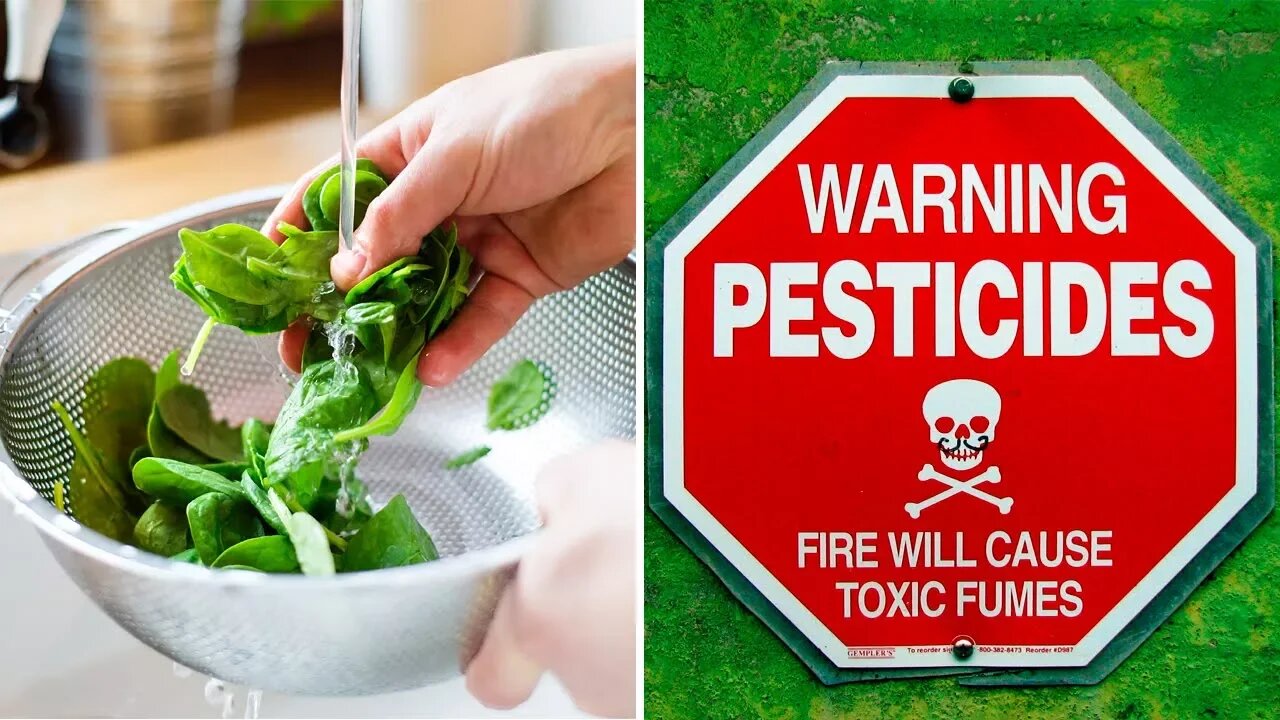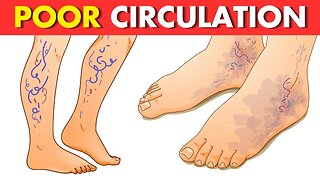Premium Only Content

Here's How to Actually Remove Pesticides From Fruits and Vegetables
Did you know that most of the fruits and vegetables you consume contain pesticides?
Although it’s a controversial subject, the long-term safety of the use of these substances has yet to be established.
Some argue that low-cost agrochemicals aren’t harmful to your health, while others believe that the consumption of these substances may be linked to the emergence of various diseases, such as cancer.
The fact is that the use of pesticides is commonplace nowadays, even in organic foods, with the only difference being that they come from natural sources. Tests by NGOs found frighteningly high amounts of agrochemical residues in fruits and vegetables.
If you care about the uncontrolled ingestion of these substances, this video is for you. We will explore some ways to mitigate and even completely remove many of the pesticides found in fruits and vegetables.
1. Water
Experts suggest that the first step in removing pesticide residues in fruits and vegetables is to wash them with water. The simple act of washing food with water, can remove up to 80% of the residues of pesticides found in the peels and skins. Washing with slightly salty water or immersing the fruits and vegetables in boiling water also helps.
2. Remove the peel
If you do not know where the food you intend to consume came from, it may be best to take the peel off even after washing it. The point is to eat only the peel of those foods whose origin you know. Furthermore, its preferable to always eat organic.
3. Vinegar
Many specialized websites suggest washing fruits and vegetables with water and vinegar as a way to help eliminate pesticide residues. To use vinegar, pour 1 part vinegar to every 2 parts of water in a bowl. Soak the fruits and vegetables in this solution for 15-30 minutes, rinsing them with cold water after that.
4. Sodium bicarbonate
A study published in the Journal of Agricultural and Food Chemistry showed the effectiveness of sodium bicarbonate, in the removal of pesticide residues. In just 15 minutes, sodium bicarbonate (also known as baking soda) can remove up to 96% of this waste. Its effectiveness is due to the fact that it has a high alkalizing power, capable of breaking down these substances into harmless molecules.
To clean larger fruits and vegetables, such as apples, and eggplants, make a baking soda paste. Mix 1 teaspoon of baking soda and the same measure of water and rub it on the food. For smaller fruits and vegetables, soak them in a bowl with 1 tablespoon of baking soda per liter of water. Let them soak for 15 minutes and then rinse them off.
Another interesting way to use baking soda is by making a homemade spray from baking soda and lemon. It's quite simple.
Ingredients
1 tablespoon lemon juice;
2 tablespoons baking soda;
1 cup of water (about 250 ml).
Instructions
Add all of the ingredients in a bowl and stir until the baking soda dissolves completely. Put the solution in a spray bottle and spray it on the food. Let it set for 5 to 10 minutes and if necessary brush the fruits or vegetables to remove the most difficult residues. Then rinse normally.
What about you? How do you wash fruits and vegetables in your house? Tell us more in the comments!
----------------------------------------
Facebook: https://bit.ly/38BWbw3
Pinterest: https://bit.ly/2Irvwa6
Disclaimer: The materials and the information contained on Natural Cures channel are provided for general and educational purposes only and do not constitute any legal, medical or other professional advice on any subject matter. These statements have not been evaluated by the FDA and are not intended to diagnose, treat or cure any disease. Always seek the advice of your physician or other qualified health provider prior to starting any new diet or treatment and with any questions you may have regarding a medical condition. If you have or suspect that you have a medical problem, promptly contact your health care provider.
-
 4:50
4:50
Natural Cures
1 year ago $1.32 earned5 Warning Signs of Poor Circulation and How to Fix It
4.33K3 -
 11:23
11:23
Nikko Ortiz
1 day agoArmy Tik Tok Fails Go Hard
24.8K5 -
 2:27:44
2:27:44
Side Scrollers Podcast
17 hours agoSilksong is “TRANS CODED” + YouTube GASLIGHTS Creators + Asmongold Stops Streaming | Side Scrollers
6.41K15 -
 16:08
16:08
GritsGG
9 hours agoRank 1 Warzone Player VS Stream Snipers & a Cheater!
3.11K1 -
 1:39:16
1:39:16
The HotSeat
13 hours ago👉 STOP Blaming Each Other — Look at the Media!
22.3K25 -
 22:34
22:34
The Pascal Show
9 hours ago $0.01 earnedFEDERAL CHARGES?! Iryna Zarutska's Attacker Gets Hit With Federal Charges After Fatal Train Attack
3.51K6 -
 LIVE
LIVE
Lofi Girl
2 years agoSynthwave Radio 🌌 - beats to chill/game to
164 watching -
 13:05
13:05
Mike Rowe
4 days agoIs College DEAD? Inside America’s #1 Trade School | Sheree Utash From #448 | The Way I Heard It
72.7K26 -
 3:01:13
3:01:13
FreshandFit
5 hours agoAyesha Curry Never Wanted Steph Curry
61.4K10 -
 23:28
23:28
DeVory Darkins
10 hours ago $10.50 earnedTrump official ANNIHILATES Democrats in heated debate as CNN gets caught sympathizing with criminals
21.3K66